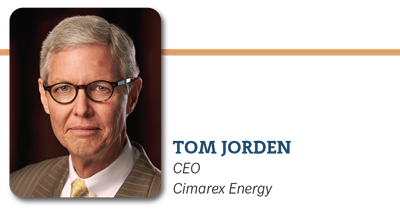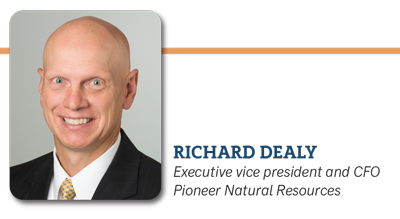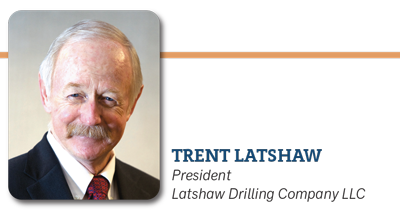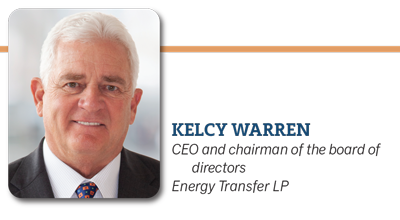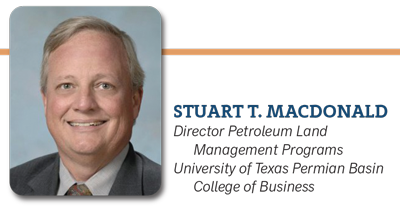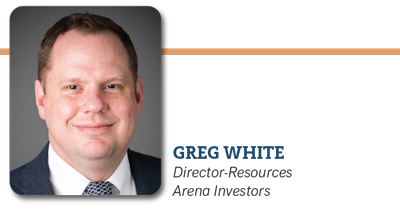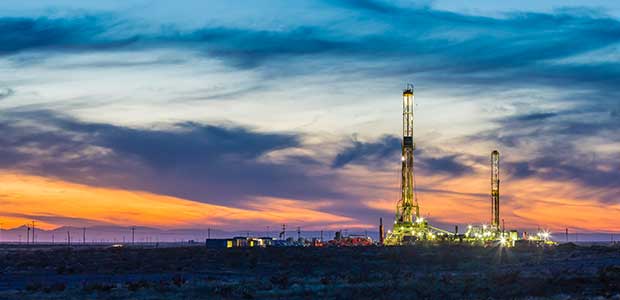
Permian Q&A
Permian Basin Companies Getting Back To Work As Recovery Continues
Editor’s Note: The Permian Basin is the essence of American energy. It’s a story of hard work and free enterprise, gut feelings and calculated risks, ingenuity and science, and legendary characters and companies.
More than anything, though, the story of the Permian is about perseverance. There have been plenty of highs, from the early days of rank wildcatting on a wing and a prayer, to the “shale superpower” era of developing unconventional reservoirs using methodical approaches and best-in-class technology. But there also have been lows. Up and down cycles certainly aren’t unique to the Permian, but their impacts are magnified in a region that runs on the oil business.
In four unforgettable years between 2016 and 2019, Permian oil and natural gas production both doubled, and condensate output grew more than threefold. But slammed first by an OPEC+ price war and then a global economic shutdown in response to COVID-19, the Permian, like every region, has been recalibrating and retooling to get a handle on challenging market dynamics. What comes next in Permian operations? How is the recovery expected to unfold across the Midland and Delaware basins going forward?
To get a reading on the state of the industry and survey the road ahead, AOGR presented questions to Tom Jorden, chief executive officer of Cimarex Energy; Richard Dealy, executive vice president and chief financial officer of Pioneer Natural Resources; Trent Latshaw, president of Latshaw Drilling Company; Kelcy Warren, CEO and chairman of the board of directors at Energy Transfer LP; Stuart MacDonald, director of petroleum land management programs in the college of business at the University of Texas Permian Basin; and Greg White, director-resources at Arena Investors.
Questions are in italics, followed by the panelists’ responses.
Getting Back To Work
Q: In your second-quarter conference call you stated, “Although we are not out of the woods yet, we are sufficiently confident in the stability of the commodity markets to get back to work.” You have already added a couple rigs in the Permian. What are your near-term Permian drilling plans and when will you start calling frac spreads back into action? What projects are at the top of the list for drilling/completion through year’s end?
JORDEN: By the end of September, we plan to have four drillings rigs and two completion crews working in the Delaware Basin (increasing from one rig and no completion crews at the start of summer). There is no “picking up where we left off” before the OPEC+ price war and COVID-19 pandemic. We have seen a reset in costs, well design and capital planning. In particular, the price shocks from the price war/pandemic have caused us to take a fresh look at our long-term plan in light of our interests in generating free cash flow and strengthening our balance sheet.
As always, return on capital is our primary criteria for prioritization. Consistent with this, we plan on drawing down a portion of our drilled but uncompleted well inventory as we look ahead. We don’t have a large DUC inventory. We strategically use DUCs to ensure operational flexibility when running multiple rigs and frac crews, but we never “bank” DUCs. Our mindset is that we do not want to store opportunity. Once a well is drilled, our goal is to get cash flow started, assuming we can prudently build facilities and market the production. We will exit 2021 with fewer DUCs, but our DUC inventory is not expected to be higher than 40 at any point.
Q: Give us a sense of how your plans for the back end of 2020 position Cimarex for success going forward. You have noted that Cimarex is basing its plans for 2021 and beyond on $35/bbl oil and $2.50/Mcf gas prices. What are the keys to maintaining your production base and generating cash flow at $35 oil? How do you anticipate higher gas prices “sweetening” well economics in Delaware Basin wells?
JORDEN: The $35 oil and $2.50 gas prices are the base case for planning. Under these price assumptions, we can maintain an active capital program, grow our dividend and generate excess free cash flow. Fortunately, we think we will be able to generate single-digit oil production growth at this level. The key elements are successful execution, ongoing cost control, improving well performance and fiscal discipline.
The $2.50 gas price is a NYMEX index price. As we all know, realized prices were horrible during the first half of 2020, occasionally going negative. As we look ahead into 2021, at current strip prices, our realized Permian price should be north of $2.00/Mcf. We produce a lot of gas, so increased gas prices are significant to cash flow generation. At the wellhead, the gas stream includes gas and natural gas liquids, so you can’t talk about gas without considering NGLs.
In recent years. oil has accounted for 60%-70% of our total cash flow, even though it was a much smaller percentage of our total production volume (Cimarex produced 185,700 barrels of oil equivalent a day in the Permian in the second quarter, with oil volumes averaging 68,800 bbl/d). With higher prices, gas and NGLs would become a greater percentage of cash flow. Higher gas prices would also make our Anadarko Basin assets more attractive, but not necessarily in contrast to the Delaware Basin. A rising tide lifts all boats in our portfolio.
Q: Cimarex shut in 20% of its production volumes last spring after analyzing reservoir performance and concluding that the majority of your wells could be shut in without damaging productivity. All those wells are now back on production. How are they performing? Did you gain any insights about your reservoirs and completion designs through the shut-in/restart processes?
JORDEN: Our technical teams studied our reservoirs prior to our shut-in decisions and concluded that, with few exceptions, we could shut in or curtail production without exposing ourselves to any long-term reservoir damage. This was an important finding, for it meant that we could make shut-in and curtailment decisions solely based on economic and lease considerations. As we have brought our wells back on line, we have not observed any significant performance degradation owing to the shut ins and curtailments.
With the goal of having positive cash flow for each well, we spent a lot of time looking at the total cost structure of our wells and identifying how much of that cost was fixed versus variable. We made shut-in decisions based on variable costs because that was the part we could change. The critical question we dialed in on was whether shutting in wells with a lot of water on them would be detrimental, especially young wells.
Delaware Basin wells can produce 70%-90% water cuts in a steady-state condition after pumping the frac water back. Several years ago, when we started using recycled production water in our frac operations, we spent time looking at the effects of pumping produced water onto these formations. We concluded then that it would not cause problems because there is so much water in the reservoirs to begin with. Our technical team was confident we could shut in or curtail production without causing long-term damage, regardless of the age of the well, even new completions that had yet been flowed back. I am delighted to say our technical team got it right and our production came back as forecast.
Q: You noted in the second quarter conference call that Cimarex expects to start achieving better average well productivity, based largely on increased spacing between wells. Can you summarize what you have learned about the optimal spacing in the Delaware Basin? How does relaxed spacing impact your base completion design?
JORDEN: The well spacing conclusions that we have discussed apply to the Upper Wolfcamp. Other reservoirs behave differently and well spacing observations will differ depending on the target reservoir and local area. With respect to the Upper Wolfcamp, there is native permeability in the reservoir that allows our wells to drain an area that extends beyond the created fracture network. We learned this through extensive testing that identified greater well interference than we had originally modeled.
There is significant upside in this observation; we can recover the same hydrocarbon volume with fewer wells. We can do this by increasing our well spacing and upsizing our completion effort, therefore allowing each well to drain a larger area. This will result in greater capital efficiency, increased well performance and better total program investment returns.
Holding An Enviable Position
Q: Pioneer managed to maintain drilling and completion activity throughout the second quarter, generating $165 million in free cash flow and exiting the quarter producing the same volume on a barrel of oil equivalent basis than at the end the first quarter, even with well shut-ins. How were you able to accomplish that? What does its ability to withstand that almost impossibly challenging business environment say about Pioneer’s Permian assets and strategy?
DEALY: Pioneer was well positioned going into the most recent downturn due to a combination of our strong balance sheet, high-return wells and derivative positions. As a result of COVID-19 and the macroeconomic environment, we adjusted our 2020 capital plan and we were able to preserve a program that is very capitally efficient and generates free cash flow. In addition, due to the strong efforts of our employees, Pioneer was able to significantly reduce our well costs by approximately 20% during the year through efficiencies and cost deflation. Our results are underpinned by our high-quality acreage position in the Midland Basin, which we believe offers the highest returns for unconventional development.
Q: You have indicated that Pioneer plans to average five-eight rigs and two-three frac spreads through year’s end, bringing on additional rigs and spreads in 2021 to achieve 5% annual production growth. On what commodity price levels are you basing those plans? What factors will determine the pace at which you ramp activity? Could increasing natural gas prices materially impact the economics of Pioneer’s Midland Basin “oil” wells?
DEALY: The plan outlined during our second quarter call was based on strip pricing at the end of July, when West Texas Intermediate was in the low $40s. Our activity plans and subsequent growth plans are a function of our new capital allocation framework, where we will reinvest between 70% and 80% of our cash flow, therefore generating significant free cash flow. We anticipate that oil prices will continue to improve as the global economy stabilizes and a vaccine becomes available for COVID-19. However, until that occurs, we will remain flexible and responsive to global macroeconomic conditions. Natural gas prices do not materially impact the economics of drilling oil wells, but higher natural gas prices are a benefit to Pioneer in the form of additional revenue from the production stream.
Q: The Permian has seen plenty of ups and downs over the years, but it has no doubt become the crown jewel of U.S. unconventional resource plays. Where do you envision things going from here in the basin?
DEALY: The Permian Basin will undoubtedly continue to be the major source of U.S. shale production. Global demand has strongly rebounded from the April and May lows, and you have seen that reflected similarly in oil prices. We expect oil prices to further improve as global demand recovers, with a high likelihood that a vaccine is developed by the end of this year or early next year. We continue to believe having a strong balance sheet, combined with being a low-cost operator with strong margins and the best returns, places Pioneer in an enviable position, allowing us to generate free cash flow and return capital to shareholders.
Tip Of The Spear
Q: With oil prices stabilizing in the $42-$43 range this summer, operators have restored the vast majority of shut-in production and are turning their attention to resuming the drilling and completion of new wells. Do you expect more of Latshaw’s rigs to be called back into action this fall? As a contractor, you know better than most that this business is all about ups and downs. Looking at the Permian, are we seeing the bottoming out of rig counts? How do you see the pace of recovery in drilling activity proceeding across the basin in 2021?
LATSHAW: Our rig count bottomed at five in June and has increased back up to eight active rigs recently. However, a couple of those are on short-term work to drill two-three wells so they could go back down. We are optimistic that we will put a couple more rigs back to work in the fourth quarter.
I do think the national rig count has probably bottomed out at this point, and hopefully so has the Permian. It may bump along bottom for a while longer, but I am not anticipating any big continued drops from here. Having said that, if there’s any consistency in the history of my predictions, it is how often I have been wrong!
As always, activity levels are dependent on commodity prices, and they in turn, are dependent on global supply and demand, and we all know what the supply/demand story has been during the past few months. Assuming the world continues to crawl out of this COVID lockdown in 2021, and assuming that OPEC+ continues the high compliance levels to its supply reduction agreement, I am optimistic that we will continue to get the supply/demand equation back into balance. Given the lack of drilling activity around the world, and the rapid decline rates of U.S. shale wells, there’s actually the potential for the world being in an undersupplied scenario in oil going into 2022. I kept telling everyone last spring that this too shall pass. And I am sure looking forward to seeing it!
Q: Operators have recorded 40% and higher reductions in spud-to-rig-release drilling times in the Delaware and Midland basins over the past three years. That’s a remarkable accomplishment, made possible by the crews manning the rigs. From the contractor’s perspective, what have been the keys to achieving ever-faster drilling times? Are we still seeing reductions in drilling days, or are we nearing a point of maximum efficiency?
LATSHAW: I think the main drivers for this continued improvement in drilling times has been improvements in downhole tool technology (bits, mud motors, measurement-while-drilling tools, etc.), and the natural progression of a learning curve both for the rig crews and the operators’ company personnel. As with anything, the more times you do something repetitively, not only do you get better, but you find incremental ways to tweak the process to save time and become more efficient.
I won’t say that we can’t still find ways to shave off some more time on wells, but as with every cycle, I think we are probably close to our peak efficiencies. We see this every downturn. We get much more efficient as we get to the bottom of the cycle out of necessity and because only the best crews are still working, and then when we start coming off bottom and activity increases, we start to lose some of these efficiencies because we are having to hire either new people to the industry and train them, or bringing back hands that haven’t worked on a rig for a long time.
As we all know, to make money at $40 oil, you have to be pretty darn efficient, but $80-$100 oil can make up for a lot of sins and inefficiencies. And so, the worm turns, and we continue to ride this ocean wave up and down once more.
Q: Let us not forget about President Trump’s July 29 visit to Latshaw Rig Nos. 43 and 9, which were drilling on adjacent pads for Double Eagle in Midland County, Tx. That followed Vice President Pence’s April 2019 tour of Latshaw’s Rig 45 on a Diamondback Energy location. What prompted those visits, and if you don’t mind sharing, what do you hope Trump and Pence took from their experiences?
LATSHAW: I can’t speak for President Trump or Vice President Pence, but they are both very strong supporters of our industry. It’s one thing to talk about it, and another to show it. I think their trips to the Permian Basin–the heart of this country’s oil field, and the most active area in the world–was to show their support for our industry and to emphasize its importance to our economy, our military and our national security. For those that know some history, being entirely self-sufficient in oil production is one of the things that helped us win World War II. Neither Germany nor Japan had the domestic capacities to fuel their war efforts.
Again, I am not able to speak for either of them, but I hope what they learned from their trips was a better appreciation for the technology that’s involved in drilling these horizontal wells. But more importantly, I hope they have a better appreciation of the men and women who are out there, 24 hours a day, 365 days a year, working in the elements, drilling these wells that provide the energy our nation runs on. Due to their work schedules, they live on the rigs for six months out of the year and are away from their families. I always strive to impress on our employees that they are the tip of the spear in this industry. They have to drill a well first before anything else can happen and the oil and gas then can be turned into useful products. I like to compare them with the Marines in that they are the first ones to come ashore and establish a beachhead. Everyone else then comes in behind them!
Connecting The Dots
Q: The Lower-48 has undergone a massive midstream build-out to connect the dots between supply basins and market centers. COVID-19 has temporarily arrested production growth trends. How is this impacting system capacities and planned projects in the Permian and Gulf Coast?
WARREN: I can tell you that we have seen our volumes out of the Permian and Gulf Coast areas picking up over the past month, resulting in our pipelines being at or above pre-COVID volumes. However, the COVID-related slowdown has changed market demand, leaving ample pipeline takeaway capacity to cover existing and forecasted production levels. This has caused many companies to re-evaluate planned projects that would have added takeaway capacity. Given the available and projected capacity, we would expect the pace of new construction to be slowed as the industry recovers and pipeline companies maximize their existing assets.
Q: What will the next generation of Permian oil, gas and NGL infrastructure projects look like? Will we continue to see large-scale green-field capacity additions, or will the order of the day be smaller-scale projects built off existing systems?
WARREN: The big build-out in the Permian has already occurred, so we would expect to see fewer large-scale capacity additions in the future. Instead, we are more likely to see smaller projects that utilize existing assets and are more capital efficient with higher investment returns.
Energy Transfer is already well positioned to do this with more than 90,000 miles of pipeline and related infrastructure in 38 states that connect all of the major supply basins to major demand markets in the United States as well as exports from both the East Coast and the Gulf Coast. Rig counts tend to ebb and flow, and from time to time, rigs move from one basin to the other, and we are naturally hedged against that. Energy Transfer is unique in that, because of the connectivity of our pipeline systems, we are more immunized than any company I know.
Our recent completion of the Lone Star Express Pipeline expansion adds connectivity out of the Permian and Delaware basins to the Gulf Coast. It is part of our 44,500 miles of pipeline in Texas that connect to our three facilities along the Gulf Coast.
Q: One of the challenges for midstream companies is timing and sizing projects to balance the need to have adequate capacity on one hand against the risk of having too much on the other. That is especially true in the Permian, where liquids and gas production both grew rapidly within a short period. How is Energy Transfer managing this balance?
WARREN: As an industry, this has been a recurring issue. We are constantly reviewing the overall market for supply and demand, and have the flexibility to back off of projects when we see an overbuild happening, as we did with the Permian Basin. In fact, we chose not to pursue our Permian Gulf Coast pipeline project in 2019, and instead focused on expanding our existing Lone Star Express assets to provide that connectivity. Utilizing existing assets provides us the flexibility to more quickly meet the market’s needs while minimizing potential regulatory hurdles. Given the diversity of our current asset portfolio, Energy Transfer is extremely well positioned to provide creative, capital efficient midstream solutions.
Helping Unload The Pipe
Q: Investors have been purchasing mineral rights historically held by landowners, with the aggregate value of publicly announced mineral and royalty acquisitions in the Permian totaling in the billions of dollars over the past couple years. How does investor ownership of mineral rights/royalties impact the traditional relationship between the landowner and the company developing the acreage? What are the implications for the oil and gas operator?
MACDONALD: This is an important and straightforward question with a simple answer. Surface damages are going to become more of an issue and nuisance suits from surface owners will be more prevalent. This is really easy to see. I live on property in rural Wilbarger County, Tx., and still own the minerals. If an operator is willing to drill a well, not only will we not be particularly concerned about the mesquite and cactus destroyed in the process, but if it will get things moving faster, we will help you unload the pipe! Anything short of a “Wild Mary Sudik” scenario you can make go away by improving my roads a little.
Yet, if I owned no minerals, you might find that every cactus and mesquite that had to be removed had great value and I just might get real sentimental about the view, peace, tranquility and any endangered spider I could find. Why? Because we are looking forward to the royalty checks. When you sever the minerals from the surface and the surface owner isn’t participating in the upside of the drilling and production activity, about the only money they can make will be surface damages. Plus, they will be kicking themselves for selling the minerals. Now this isn’t the end of the world. In Oklahoma, for example, it is common for most, if not all, of the minerals to have been severed from the surface. In many cases, however, the operator will be dealing with less cooperative surface owners.
Q: Everyone remembers the “great land rush” in the Permian from 2016 to 2018, and the intense competition for lease acquisition. How is the job of land management different with drilling and completion activity now focused on development rather than exploration or hold-by-production mode? With consolidation expected, what are the land management challenges and considerations specific to the buying and selling of assets?
MACDONALD: In a land rush, you are pressed by time. This means it’s imperative to get the lease signed and perhaps a decision will be made to get the signatures today and worry about the curative work tomorrow. This isn’t anything new; it’s an old pattern. But there will be a lot more focus on curative work and making sure you understand fully and comply by the language of whatever you agreed to during the rush. No title is completely risk-free, but issues with title that are ignored or saved for another day become what keep you busy when things slow down.
During mergers and consolidations, a basic part of due diligence is examining titles. No portfolio of title will be perfect, but the stronger they are, the greater the value of the asset that is being sold. What you are going to see is a lot less tolerance for risk in buying assets and more effort to cure defects on the part of the seller.
Q: That segues into the new bachelor’s degree-level energy land management program that UTPB launched this semester. What are the primary challenges facing the next generation of landmen? How is the profession, and the skillsets and aptitudes it requires, evolving with changing business requirements and technological advances as the “Shale 3.0” era begins in the Permian?
MACDONALD: In no particular order, more time is probably going to be spent dealing with surface damages. I also suspect that we will see more environmentally based suits by third parties forcing the development of land programs that can demonstrate how they are protecting habitat at the same time they operate. Those working in a land program are going to have learn how to explain what they do in language that is more acceptable to an increasingly urban population that is oblivious to just how dependent it is on hydrocarbons. In the future, the industry won’t be able to count on much of the good will it had in the past. Obviously, landmen are going to have to be more technically proficient with information technology, including GIS systems. Yet at the same time, many of the same old challenges will be present. At its heart, the land professional’s job has always been about people and knowing how to work with people, educate them and persuade them. That won’t change in the future.
A Place At The Table
Q: Unconventional tight oil plays have been the focus of Permian Basin investment and activity in recent years, overshadowing conventional plays and the large number of smaller operators working conventional reservoirs. Your firm is an institutional asset manager that specializes in providing “creative solutions for those seeking capital in special situations.” What might that look like in practice for a small Permian producer?
WHITE: We typically lend against conventional proved, developed producing reserves as opposed to unconventional reserves, so it is the smaller operator with conventional assets that we work with. As an example of creative reserves-based financing structures, we often see situations where a company wants to borrow, say, $30 million, and we think maybe $10 million is the maximum we could provide initially. What we may do in that case is structure the deal where the first $10 million has certain metrics. If and when those metrics are reached, we may give (at our option) the ability to approve another $5 million. Then another $7 million, followed by another $8 million.
So, we may eventually get to $30 million, but we stage it so that we do not assume the “business plan” risk as a lender. At any given level of incremental advance, if the borrower exhausts the capital and creates no additional value, we are still covered. We imagine that would be a preferable approach in Permian situations.
Q: What advantages do nontraditional institutional credit facilities offer small operators compared with more traditional reserves-based bank lending, particularly considering today’s restricted capital borrowing environment? What is a minimum deal size?
WHITE: For the smaller operator, the bottom line is that the banks are not lending right now, and we seek to not only be their new “bank,” but be a better version of it. We can move faster than a traditional bank. In fact, we can get a deal done in 30 days or fewer, partly because we have fewer regulatory compliance requirements. Creative financing is far less constrained and does not force operators and assets to have to fit into a narrow box. We see all kinds of situations. Furthermore, we are totally comfortable engaging with entrepreneurial-owned entities and teams. And we lend small, so the smaller operators that tend to get overlooked by larger funds have a place at the table. As a rough guide, any deal with production of 500 bbl/d or more meets our interest level size-wise.
For other great articles about exploration, drilling, completions and production, subscribe to The American Oil & Gas Reporter and bookmark www.aogr.com.







